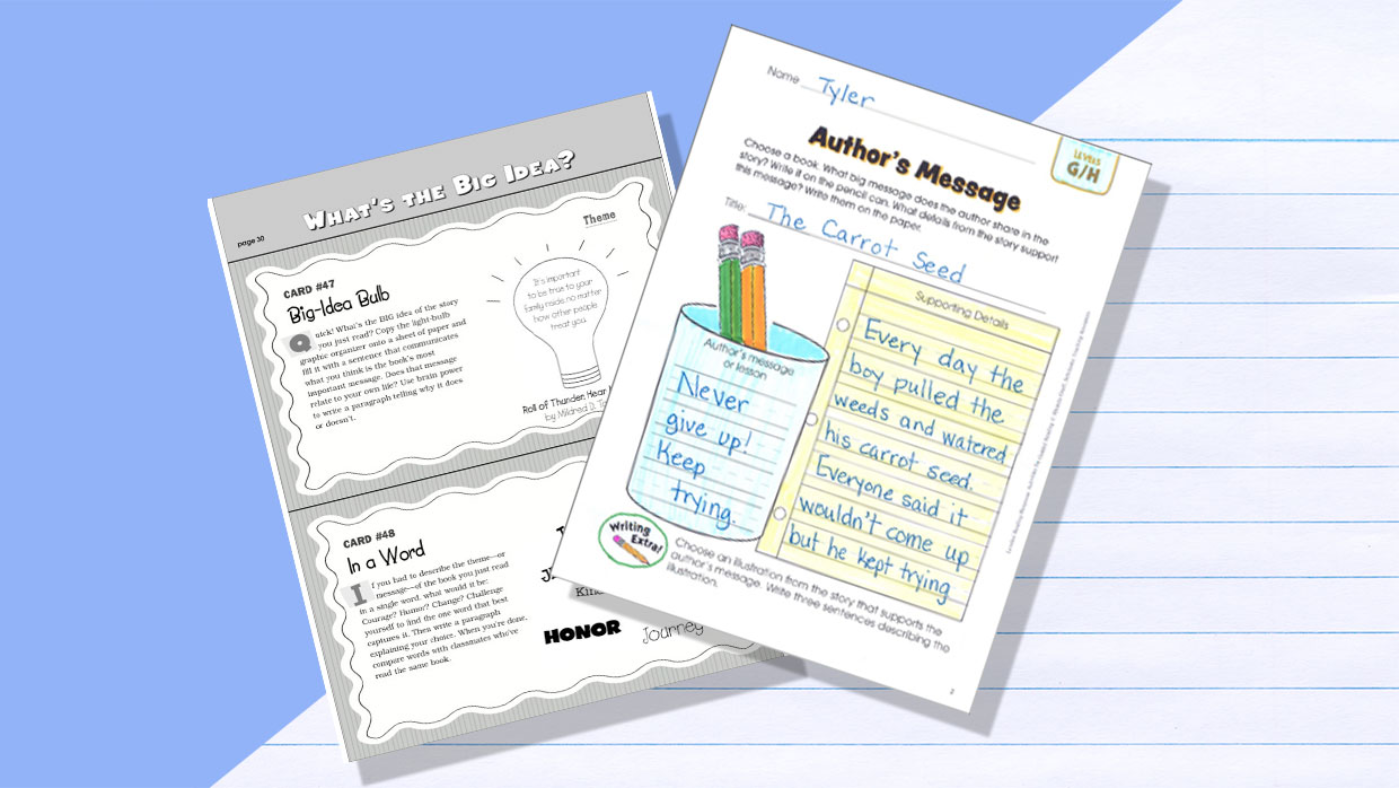We don't just want our students to know how to read, we also want them to be able to deeply understand what they read. Identifying the theme of a piece of literature is an important part of reading comprehension. Acceptance, compassion, cooperation, and perseverance are likely common themes in many of the stories your students are reading. With your support and guidance, your students can learn how to explore a text to uncover its theme or themes, and to respond to the ideas the author has presented.
Giving students varied texts and tools, such as reading response bookmarks or graphic organizers, can be an effective way to provide practice with this skill. You probably already have a few proven tricks and strategies up your sleeve, but if you're looking for some new and engaging ideas for your classroom, here are 5 resources to help your young readers identify and understand themes in literature.
1. Questions About Theme: Writing Prompts
Perfect for students in grades 3–6, this 5-page resource includes 10 writing prompts to help readers identify, understand, and respond to any book's big idea or theme. Each prompt includes an example of a small graphic organizer using a well-known model text.
2. Driving Home the Theme: Graphic Organizer
With this graphic organizer, young readers in grades 2–4 will identify the driving theme of any text by using individual words or short phrases to summarize ideas and provide text evidence for their choices.
3. What's the Message? Reading Response Bookmark & Graphic Organizer
This 5-page resource includes 2 teaching pages, 1 graphic organizer, and 1 bookmark, which help students in grades 1–3 identify the message or theme of a story by exploring the lessons the main character learned.
4. Story Message (Leveled-Reading E/F): Guided Reading Response
The message of a story is usually implied instead of stated, which can make identifying themes challenging for young students. Students in grades 1–2 use events form their reading to infer important themes and messages with this graphic organizer, making it a perfect addition to any reading lesson.
5. Author's Message (Leveled-Reading G/H): Guided Reading Response
Designed for students in grades 1–2, this graphic organizer helps young readers explore how authors convey messages and lessons through specific events and details in a story.
Any of these reading resources are a great complement to your existing lessons and are an effective tool for young readers eager to uncover meaning in the books they're reading. From the most common themes found in literature to messages that are more complex and difficult to uncover, being able to identify and understand these big ideas will benefit your students inside and outside the classroom.
To see more graphic organizers and gain access to thousands of printable and downloadable teacher resources, log in or subscribe to Scholastic Teachables today.
